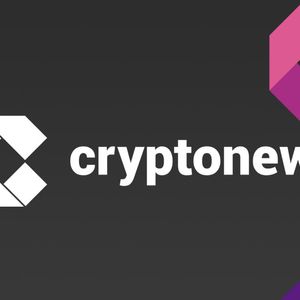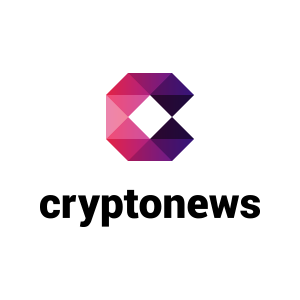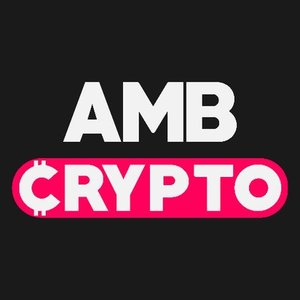NFT Lending Volume Crashes 97% as Sector ‘Matures’, says DappRadar
5 min read
The non-fungible token (NFT) lending market is undergoing a collapse in volume and user activity. Blockchain analytics platform DappRadar released a report on May 27 showing that the NFT lending market dropped from nearly $1 billion in monthly volume to just over $50 million in May 2025, tumbling by 97% from its January 2024 peak . NFT Lending Market Plummets 97% NFT lending volumes have collapsed from $1B in Jan 2024 to $50M in May 2025; analysts suggest tokenized real-world assets could revive the sector. https://t.co/Gc7JhhF9Ow — Crypto economy (EN) (@CryptoEconomyEN) May 28, 2025 NFT Lending Declines for Good Reasons DappRadar analyst Sara Gherghelas told Cryptonews that NFT lending allows users to borrow cryptocurrencies like ETH by using NFTs as collateral. This was seen as a way to bring more financial utility to digital assets by giving holders access to liquidity without needing to sell their NFTs. Unfortunately, the NFT lending market is witnessing a steep decline, which Gherghelas believes is due to three main factors. “First, this shows the end of speculative incentives. Much of the early activity was driven by airdrops and farming, especially on platforms like Blur. As those incentives dried up, so did the volume,” Gherghelas said. Additionally, Gherghelas noted that falling NFT prices have led to a wave of liquidations. This has also resulted in dozens of NFT lending protocols becoming inactive, leaving only a few key players. A Closer Look at the NFT Lending Market One of those key players is NFTfi, an NFT lending platform created in 2021. Ari Bui, NFTfi CMO, told Cryptonews that while the sector is undergoing changes, it’s important to consider the full picture of the lending market. “NFTfi pioneered NFT lending in 2021, when total outstanding debt was just $100,000,” Bui said. “Today, the market is significantly more developed, with platforms like Blend, Gondi, and others contributing to a current total outstanding debt of around $82 million.” The first NFTfi loan was on May 15, 2020. True pioneer days. Since then, we’ve earned the trust of NFT holders, collectors, and traders by running safely for 1,839 days and counting. pic.twitter.com/MWO1bcFYoG — NFTfi.com (@NFTfi) May 29, 2025 Bui added that at its peak in March 2024, the lending market reached $175 million in outstanding debt, more than double today’s figure. According to CoinMarketCap, the current total market cap for Ethereum-based NFTs is approximately $7 billion. “With $78 million currently in outstanding debt, that’s just over 1%—this is extremely low when compared to mature sectors like real estate, where debt can represent 20%–25% of the market. This suggests there’s still substantial room for growth and penetration,” Bui said. NFT Lending Matures This appears to be the case, as Gherghelas believes that NFT lending is far from dead, but rather maturing. “The entire sector is shifting from a speculative hype cycle into a niche used mostly by experienced collectors and DeFi-native users,” she said. For example, the NFT lending space appears to be maturing through a clear shift away from speculation and into more utility-driven use cases. Gherghelas pointed out that the sector is currently seeing a preference for long-term holds and brand-based collections like Pudgy Penguins or CryptoPunks as collateral. There has also been a rise in the use of Art NFTs like Fidenzas and Autoglyphs on lending platforms like Gondi, indicating a shift toward cultural value and provenance. Max Giammario, CEO of NFT and AI platform Kindred, told Cryptonews that these factors demonstrate that the NFT lending sector isn’t declining. Rather, it’s experiencing a necessary liquidity crunch that’s forcing a fundamental recalibration. “Volumes have dropped significantly from peak levels, but this just reflects the collapse of speculative collateral values rather than a lack of underlying demand,” he said. Giammario elaborated that most NFT lending platforms built their models around volatile, illiquid NFTs as collateral. In turn, this created an inherently fragile system. “This correction is clearing out unsustainable practices and opening space for more robust risk models and stable collateral types to emerge,” he added. Tokenized RWAs Enter NFT Lending Sector For instance, Gherghelas believes that tokenized real-world assets (RWAs) could provide more stable, lower-risk collateral, solving the volatility issue that’s long plagued NFT lending. “With RWAs like real estate shares or invoice-backed tokens, lenders gain predictability and stronger incentive to participate,” she commented. This is already starting to materialize through early integrations and infrastructure development. Gherghelas pointed out that projects like RealtyX—an RWA platform for real estate—and Courtyard—a blockchain-powered platform that transforms physical collectibles into digital assets—are laying the groundwork. “If these assets are wrapped into NFT standards, they could make NFT lending more attractive to institutional users,” she said. Yat Siu, co-founder and executive chairman of Animoca Brands, told Cryptonews that tokenized RWAs are indeed a strong use case for NFTs and can be used as collateral. Siu explained that tokenized RWA NFTs can be used for various assets (including real estate) for which the collateral amount is sufficient for lending. “The tokenization of my Stradivarius violin is one of the few examples of collateralizing an RWA NFT,” Siu commented. “I expect this field to grow as major institutions such as Galaxy provide lending on the basis of NFTs, but it will require more institutional backing and better credit market development (something that is generally non-existent in crypto, for now).” NFT Lending Market Still Needs To Grow Given the need for more institutional interest in NFT lending, the market remains limited. However, Siu is confident that the sector will advance for a number of reasons. For instance, Siu expects that there will be a revival of public interest in NFTs overall. “As the crypto market improves and wealth is created, the demand for NFTs will also increase, because NFTs represent the cultural, social, and symbolic status items of our modern digital life,” he stated. Siu further pointed out that institutional adoption is always a late entrant, but it’s become apparent that there is strong interest in the market for fungible tokens. “This will also lead to greater interest in NFTs. Institutional backing used to be almost exclusively about ‘money, stocks and assets’ but then branched out into adjacent assets like art and collectibles,” Siu said. Additionally, Bui noted that NFT lending is still in its early innings. As volatility decreases and real-world use cases expand, he believes lending will be one of the key pillars that bring sustainability and financial utility to the NFT ecosystem. He added that the NFT lending sector will grow alongside the recovery of the NFT market, which he believes is inevitable. “Lending introduces a yield component that makes long-term value creation possible, particularly for lenders,” Bui said. “At NFTfi, we see the market maturing and are tailoring our product to meet the needs of more advanced participants—like institutional funds and large-scale borrowers—rather than casual users.” The post NFT Lending Volume Crashes 97% as Sector ‘Matures’, says DappRadar appeared first on Cryptonews .

Source: cryptonews



